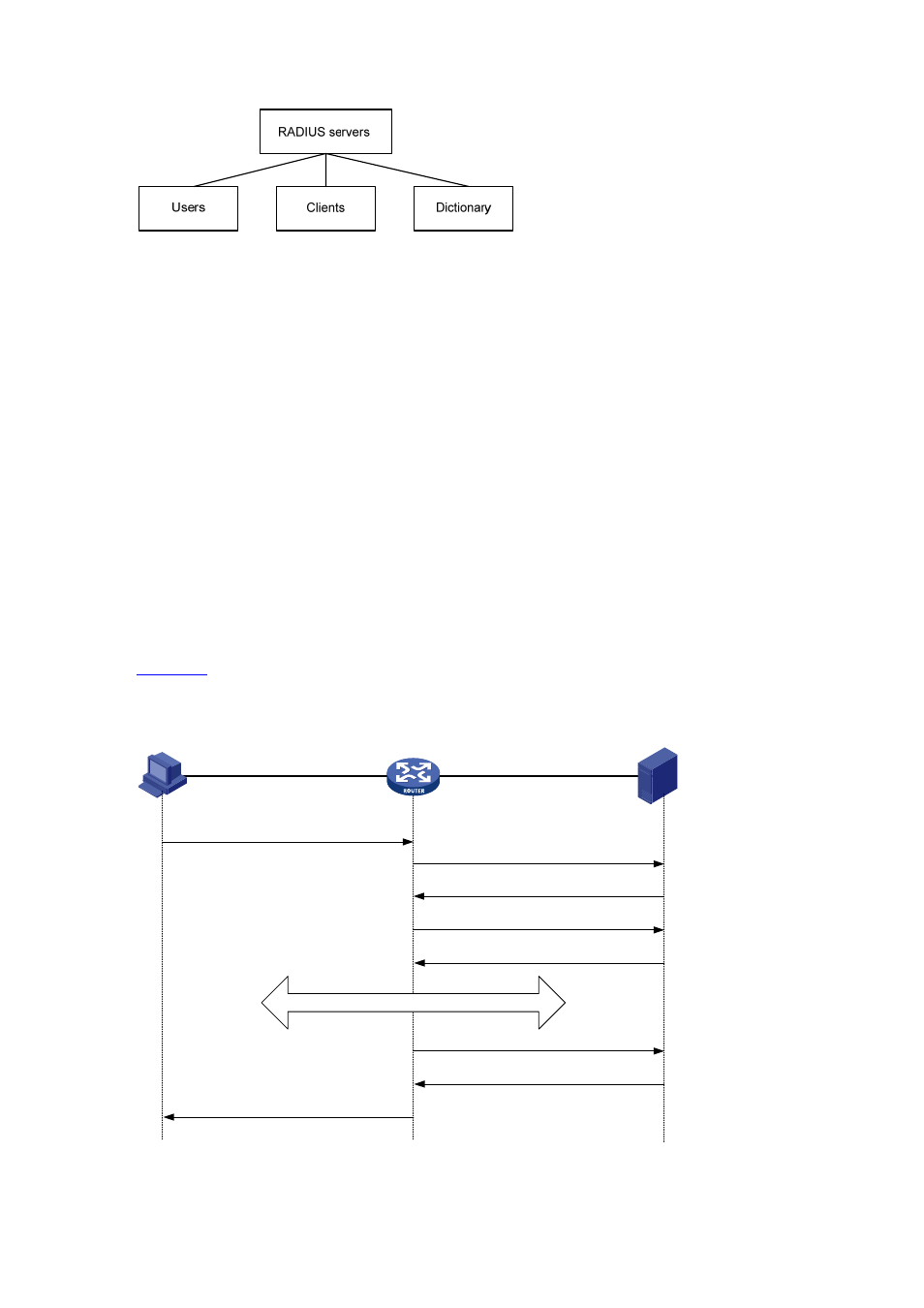Security and authentication mechanisms, Basic message exchange process of radius – H3C Technologies H3C S5120 Series Switches User Manual
Page 409

1-3
Figure 1-2 RADIUS server components
z
Users: Stores user information such as the usernames, passwords, applied protocols, and IP
addresses.
z
Clients: Stores information about RADIUS clients, such as the shared keys and IP addresses.
z
Dictionary: Stores information about the meanings of RADIUS protocol attributes and their values.
Security and Authentication Mechanisms
Information exchanged between a RADIUS client and the RADIUS server is authenticated with a
shared key, which is never transmitted over the network. This enhances the information exchange
security. In addition, to prevent user passwords from being intercepted in non-secure networks,
RADIUS encrypts passwords before transmitting them.
A RADIUS server supports multiple user authentication methods. Moreover, a RADIUS server can act
as the client of another AAA server to provide authentication proxy services.
Basic Message Exchange Process of RADIUS
illustrates the interaction of the host, the RADIUS client, and the RADIUS server.
Figure 1-3 Basic message exchange process of RADIUS
RADIUS client
RADIUS server
1) Username and password
3) Access-Accept/Reject
2) Access-Request
4) Accounting-Request (start)
5) Accounting-Response
7) Accounting-Request (stop)
8) Accounting-Response
9) Notification of access termination
Host
6) The host accesses the resources
The following is how RADIUS operates: